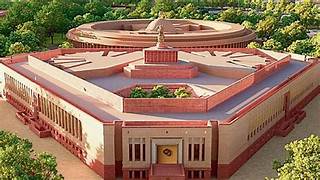India’s Forex Reserves reach $600B, 5-month high, India’s foreign exchange reserves have surged to a 15-month high, reaching $609.02 billion as of July 14, 2024. This significant growth is attributed to revaluation gains from a weaker U.S. dollar and reduced U.S. Treasury yields. The Reserve Bank of India’s strategic interventions and steady foreign investments have stabilised the rupee and bolstered the reserves. This robust forex reserve position provides India with a crucial cushion against external economic shocks and ensures greater economic stability and confidence in the country’s financial outlook.
India’s Forex Reserves Reach a 15-Month High
As of July 14, 2024, India’s forex reserves stood at $609.02 billion, marking the highest level in nearly 15 months. The reserves have been on an upward trajectory for three consecutive weeks, with the latest week witnessing the largest gain of $12.74 billion in four months. This surge has been primarily driven by revaluation gains resulting from the weakening of the U.S. dollar and a reduction in U.S. Treasury yields.
The Indian economy’s resilience amidst global uncertainties has contributed to this impressive growth in foreign exchange reserves. As the COVID-19 pandemic recedes and economic activities resume, India’s exports have rebounded, bolstering the country’s foreign currency inflows. Moreover, the steady inflow of foreign direct investments and robust foreign portfolio investments have further strengthened the forex reserves.
The surge in India’s forex reserves provides India with a significant buffer against external shocks and helps maintain confidence in the country’s economic stability. It offers crucial support to the domestic currency and ensures that India is better positioned to meet its international financial obligations.
RBI’s Measures to Stabilise the Rupee
In an effort to maintain stability in the Indian rupee, the Reserve Bank of India (RBI) has adopted proactive measures. The central bank’s interventions in the spot foreign exchange markets have helped keep the rupee within a tight trading range. This approach is aimed at preventing excessive fluctuations that could have adverse effects on trade and investment.
The RBI closely monitors the currency’s movements and steps in when necessary to address any undue volatility. By using its vast foreign exchange reserves, the central bank can intervene in the forex market and influence the rupee’s exchange rate. This strategy helps maintain competitiveness in export markets while ensuring that imports remain affordable for domestic consumers.
Additionally, the RBI’s forward foreign exchange book, amounting to $19.3 billion, serves as a further safeguard against potential currency fluctuations. These prudent measures provide a sense of stability in the foreign exchange market and instill confidence among investors and businesses.
Foreign Investors’ Impact on Reserves
Foreign investors have played a significant role in bolstering India’s foreign exchange reserves. Over the past three months, they have invested a net sum of $16 billion in Indian equities. This influx of foreign investment has not only boosted the stock market but also enabled the RBI to purchase foreign currencies from the market, thereby adding to the reserves.
India’s attractive investment climate, coupled with strong economic fundamentals, has drawn foreign investors’ interest. The government’s ongoing reforms, ease of doing business initiatives, and infrastructure development have further enhanced India’s appeal as an investment destination.
The continuous inflow of foreign investments signals foreign investors’ confidence in the Indian economy’s long-term growth prospects. It also reflects India’s integration into the global financial system and its increasing relevance in international trade and finance.
Forex Reserves Position and Import Cover
The current level of India’s foreign exchange reserves, combined with the RBI’s forward foreign exchange book, provides substantial coverage for over 11 months of imports. This robust import cover is a crucial indicator of a country’s ability to withstand external shocks and manage its trade balance effectively.
A healthy import cover reduces India’s vulnerability to sudden changes in commodity prices or global economic downturns. It also instills confidence in international investors and lenders, assuring them of India’s capacity to service its external debts and obligations.
Furthermore, a comfortable foreign exchange reserve position allows India to pursue strategic policies and reforms without excessive concerns about short-term currency fluctuations. It offers the government and central bank the flexibility to focus on long-term economic development objectives and address structural challenges.
In conclusion, India’s foreign exchange reserves have reached an impressive milestone, driven by favourable global economic conditions and robust domestic policies. The RBI’s vigilant approach to stabilising the rupee, coupled with foreign investors’ continued confidence in India’s growth story, has contributed to this positive trend. With ample import cover, India is better equipped to navigate economic uncertainties and foster sustained economic growth.













